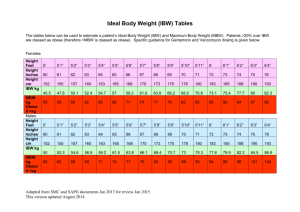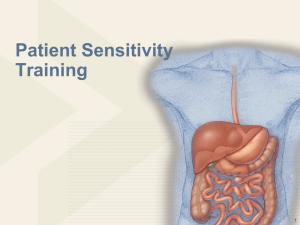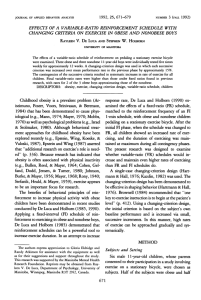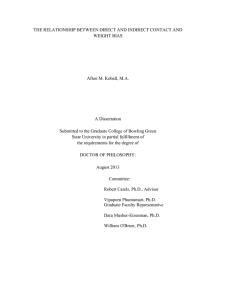Promoting a positive office environment office environment
advertisement
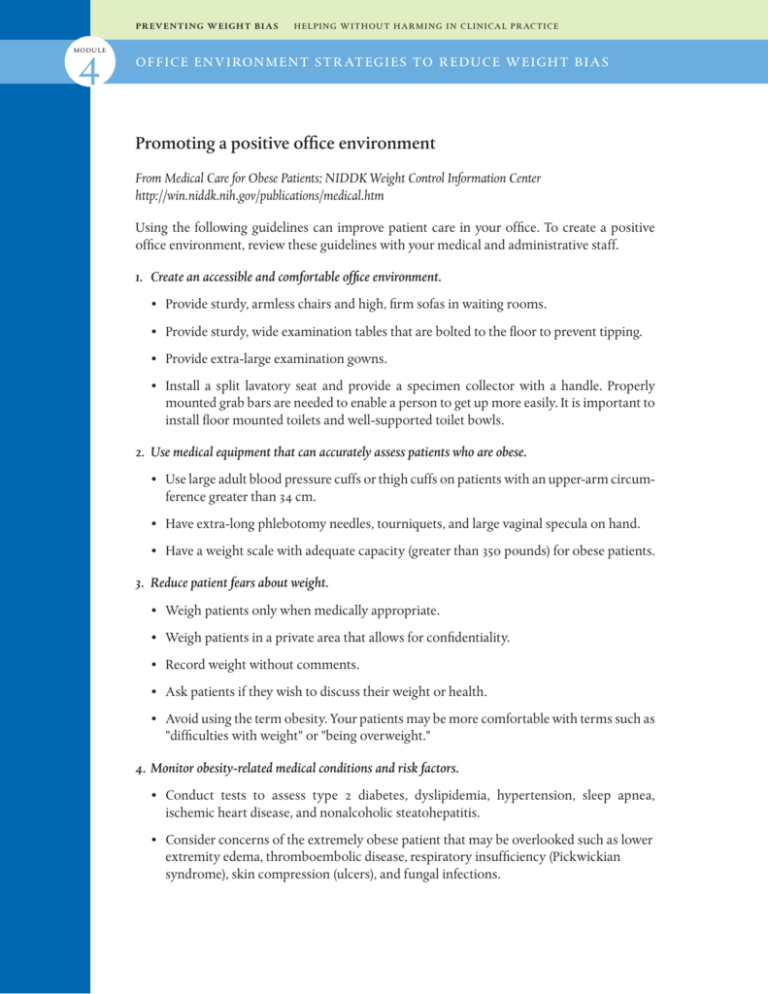
preventing weight bias 4 helping without harming in clinical pr actice module office environment str ategies to reduce weight bias Promoting a positive office environment From Medical Care for Obese Patients; NIDDK Weight Control Information Center http://win.niddk.nih.gov/publications/medical.htm Using the following guidelines can improve patient care in your office. To create a positive office environment, review these guidelines with your medical and administrative staff. 1. Create an accessible and comfortable office environment. • Provide sturdy, armless chairs and high, firm sofas in waiting rooms. • Provide sturdy, wide examination tables that are bolted to the floor to prevent tipping. • Provide extra-large examination gowns. • Install a split lavatory seat and provide a specimen collector with a handle. Properly mounted grab bars are needed to enable a person to get up more easily. It is important to install floor mounted toilets and well-supported toilet bowls. 2. Use medical equipment that can accurately assess patients who are obese. • Use large adult blood pressure cuffs or thigh cuffs on patients with an upper-arm circumference greater than 34 cm. • Have extra-long phlebotomy needles, tourniquets, and large vaginal specula on hand. • Have a weight scale with adequate capacity (greater than 350 pounds) for obese patients. 3. Reduce patient fears about weight. • Weigh patients only when medically appropriate. • Weigh patients in a private area that allows for confidentiality. • Record weight without comments. • Ask patients if they wish to discuss their weight or health. • Avoid using the term obesity. Your patients may be more comfortable with terms such as "difficulties with weight" or "being overweight." 4. Monitor obesity-related medical conditions and risk factors. • Conduct tests to assess type 2 diabetes, dyslipidemia, hypertension, sleep apnea, ischemic heart disease, and nonalcoholic steatohepatitis. • Consider concerns of the extremely obese patient that may be overlooked such as lower extremity edema, thromboembolic disease, respiratory insufficiency (Pickwickian syndrome), skin compression (ulcers), and fungal infections. preventing weight bias 4 helping without harming in clinical pr actice module office environment str ategies to reduce weight bias 5. Offer preventive care services. • Allow adequate time during office visits for preventive care services. • Recommend or provide preventive care services that are not impeded by the size of the patient, such as Pap smears, breast examinations, mammography, prostate examinations, and stool testing. 6. Encourage healthy behaviors. • Discuss weight loss – as little as 5 to 10 percent of body weight – as a treatment for weightrelated medical conditions. • Emphasize healthy behaviors to prevent further weight gain, whether or not the patient is able or willing to lose weight. • Encourage physical activity to improve cardiovascular health. • Seek out professional resources to assist your patients and provide referrals to registered dietitians, certified diabetes educators, exercise physiologists, weight management programs, and support groups, as appropriate. • Promote self-acceptance and encourage patients to lead a full and active life.








